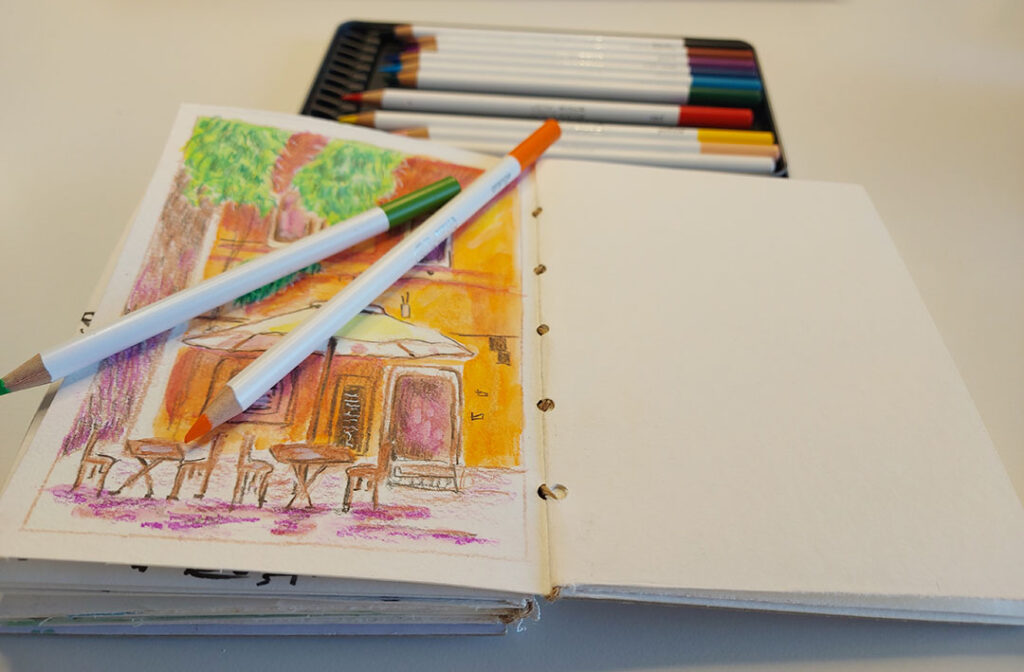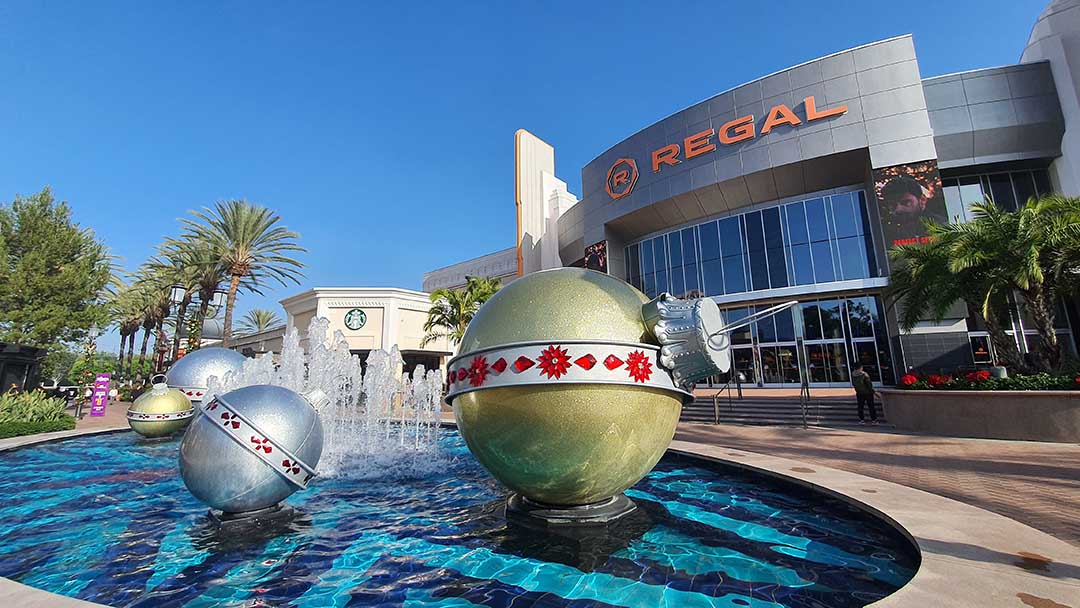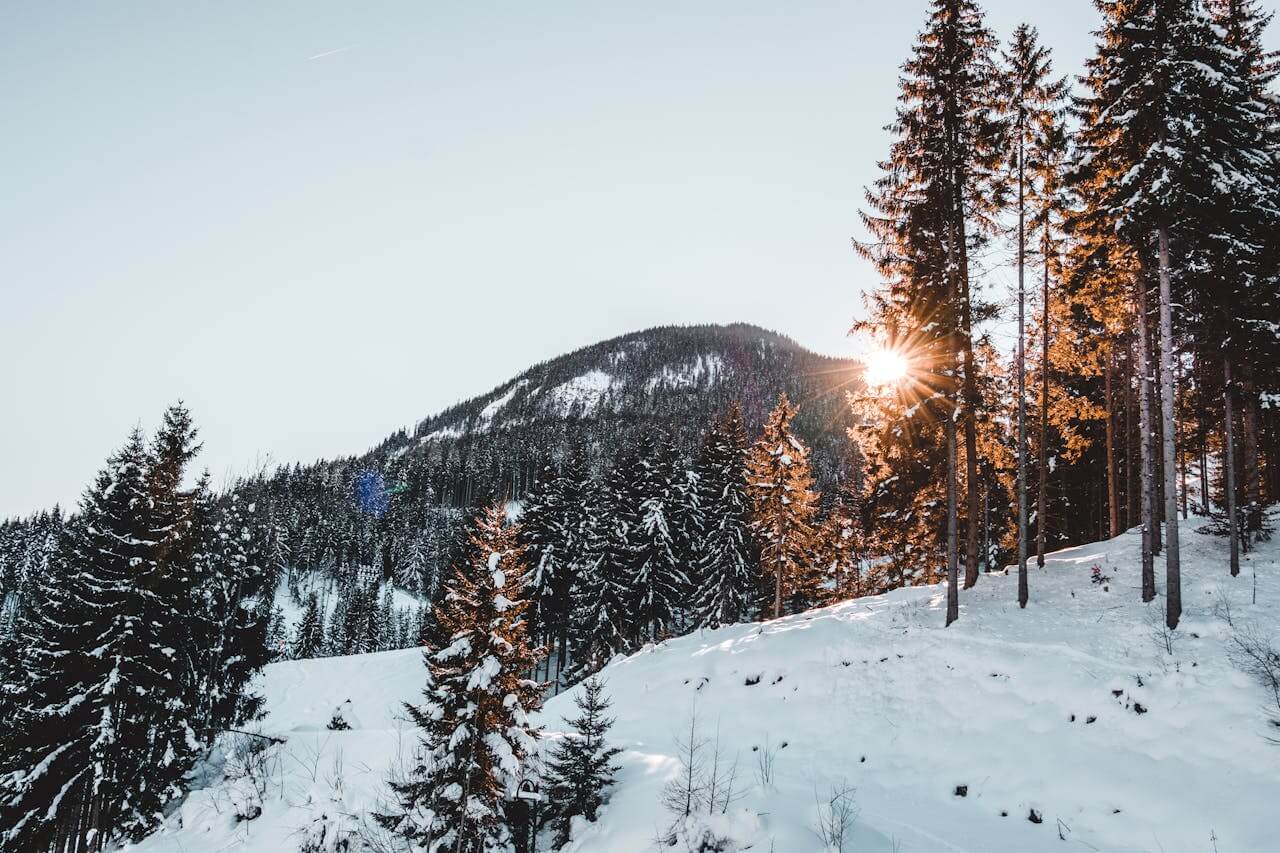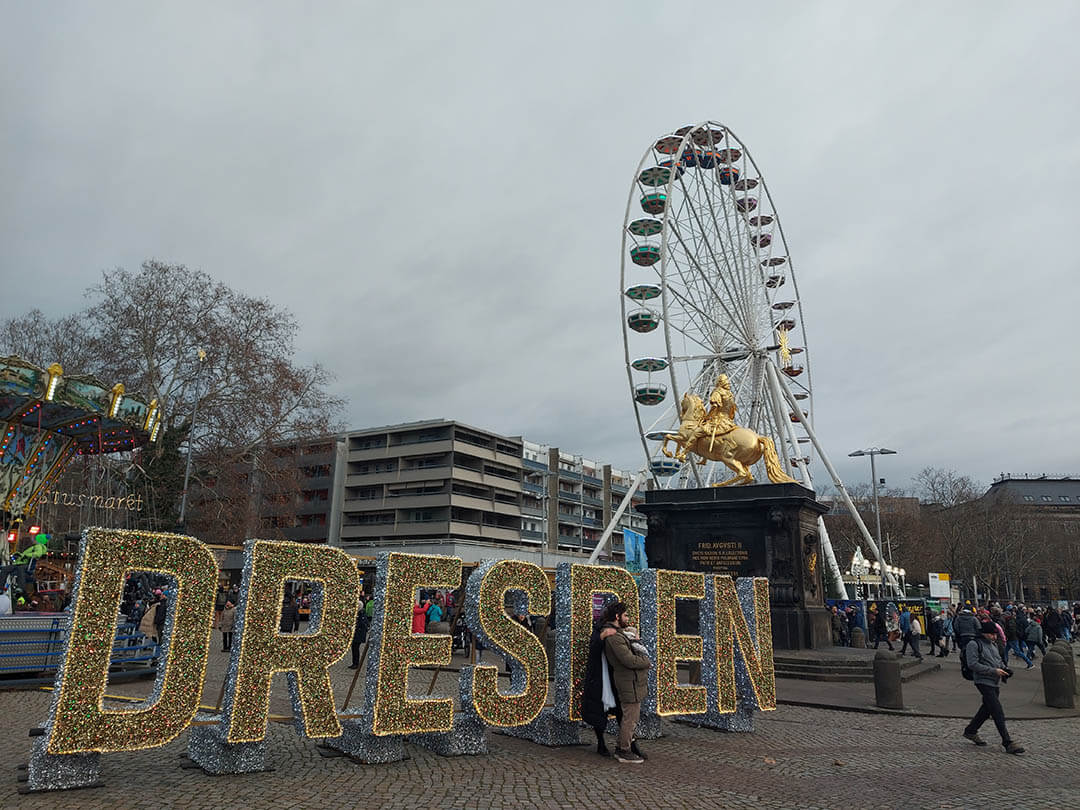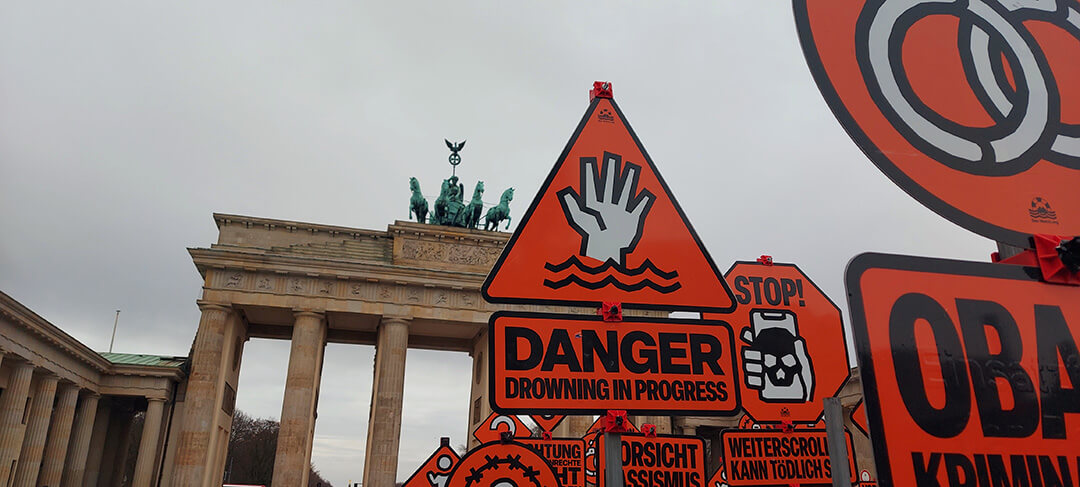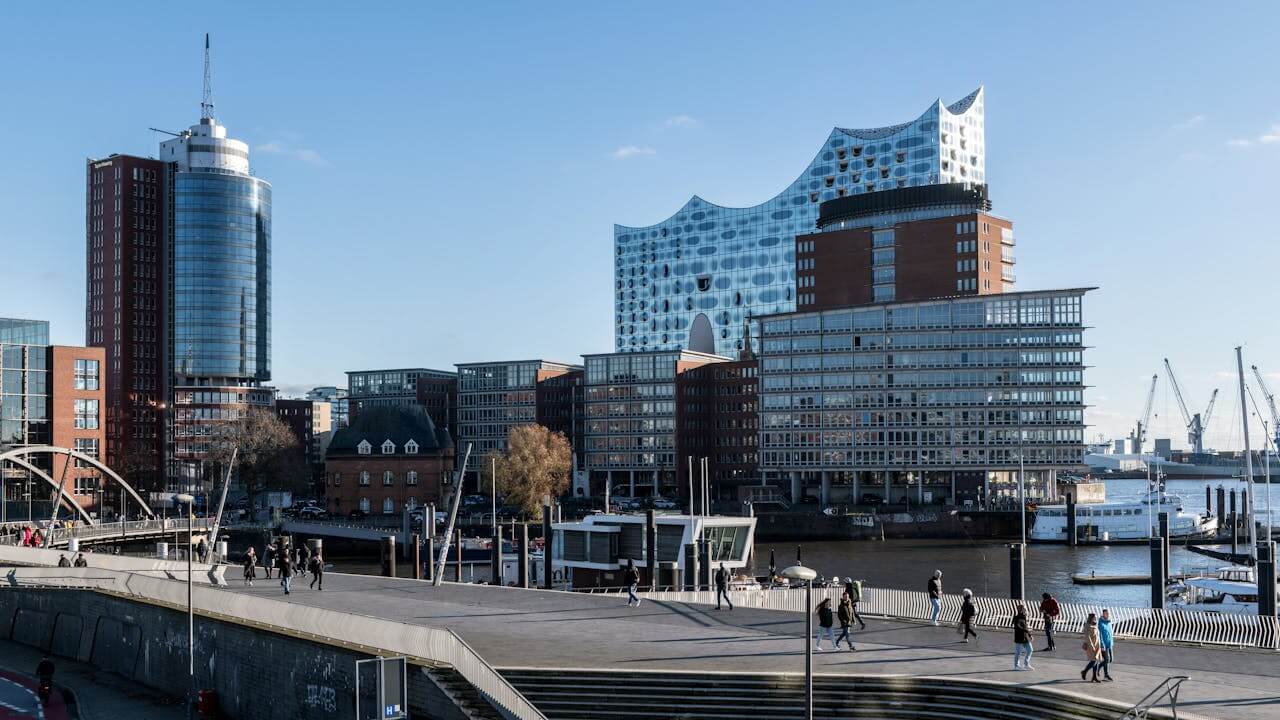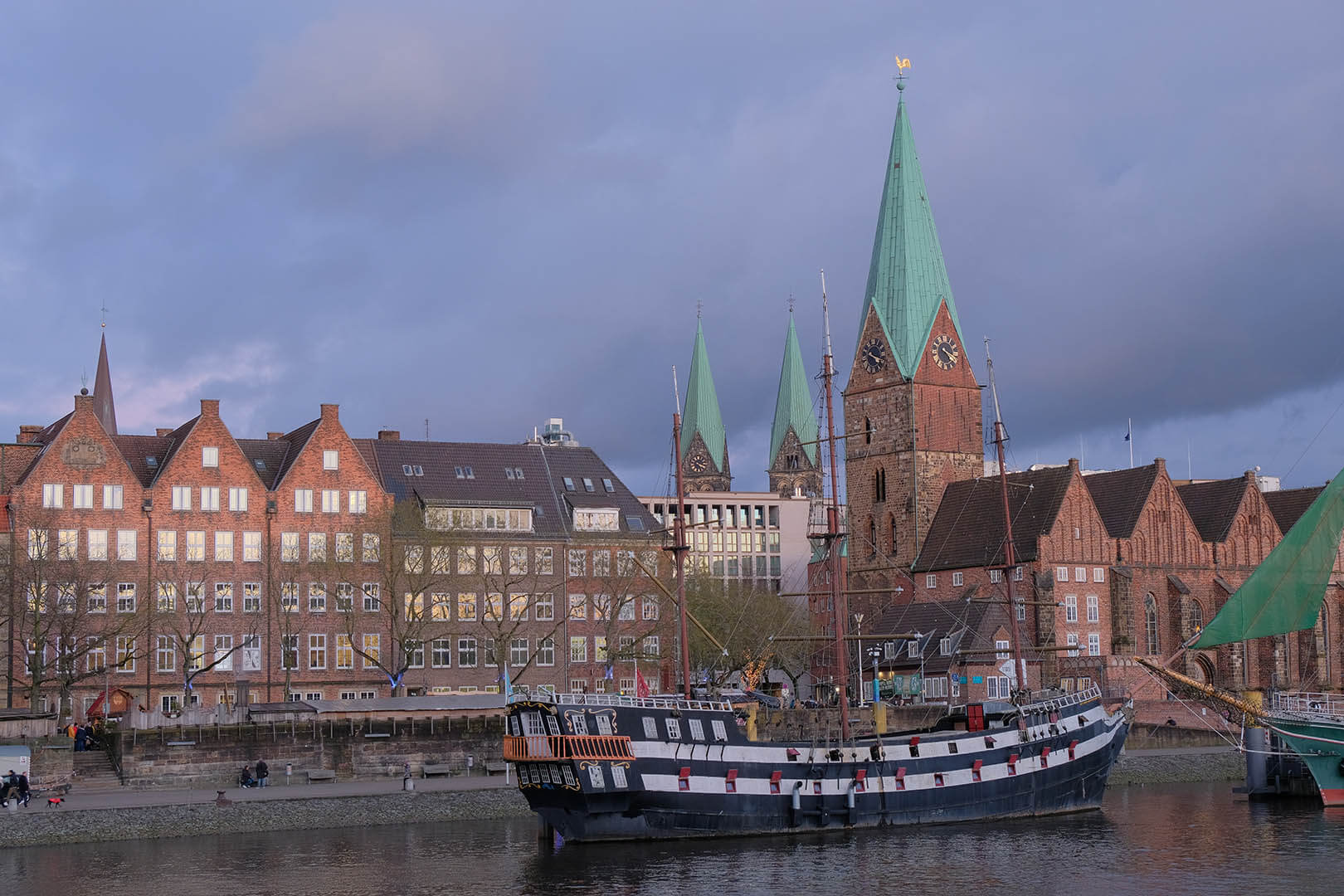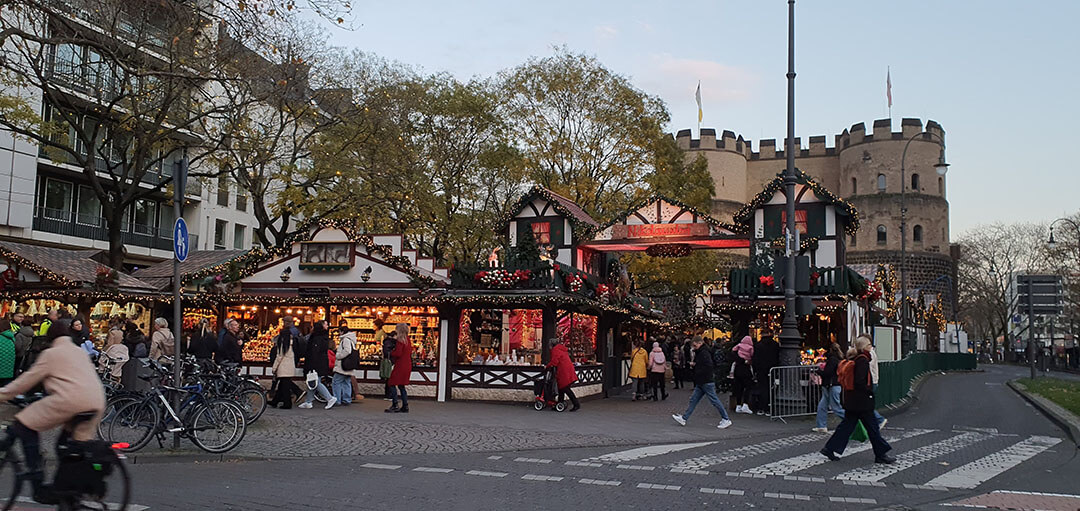Watercolor pencils are a wonderful medium for urban sketching, as they allow you to combine the precision of drawing with the fluidity of watercolor. In this tutorial, I’ll show you step by step how I created a vibrant sketch of a café in Trastevere, Rome. I had a lot of fun sketching with this pencils. It is my first time I use them without other supporting materials like liners or watercolor. I don’t count white pens cause it final touches.
If you missed my recent post about watercolor sketching read or listen it here.
See my watercolor pencils set here.
Step 1 – Coloring the Main Shapes
I began by blocking in the main shapes with watercolor pencils. At this stage, the goal is not detail, but capturing the overall structure: the orange walls of the building, the greenery above, the large umbrella, and the rows of tables and chairs. Keeping the lines simple helps to establish composition and balance before moving into watercolor effects. Think of this step as laying the foundation for the painting.
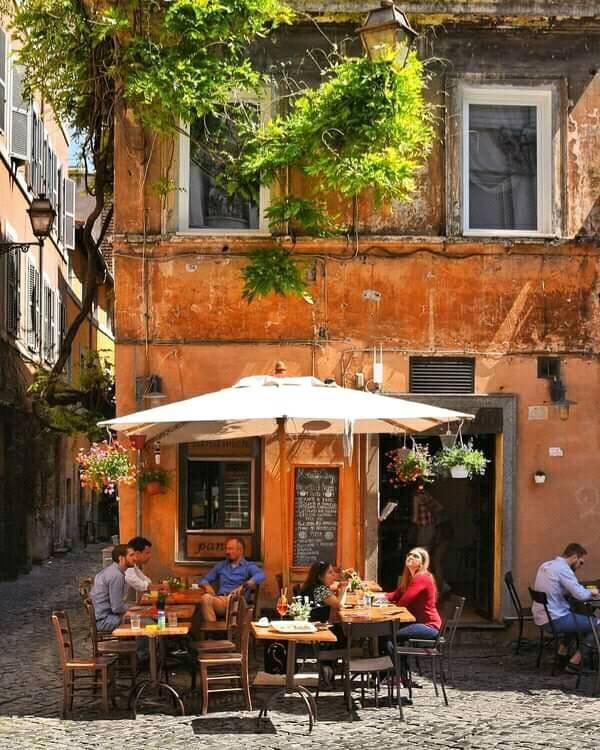

Step 2 – Washing the Pencils with a Brush
Next, I added water with a soft brush to dissolve the watercolor pencils. The dry texture transforms into smooth washes, creating a painterly effect. Here the building takes on a warm, glowing look, and the greenery blends softly into the background. It’s important to control the amount of water—too much can blur everything, while too little won’t activate the pigment fully. This is where the sketch really begins to look alive.

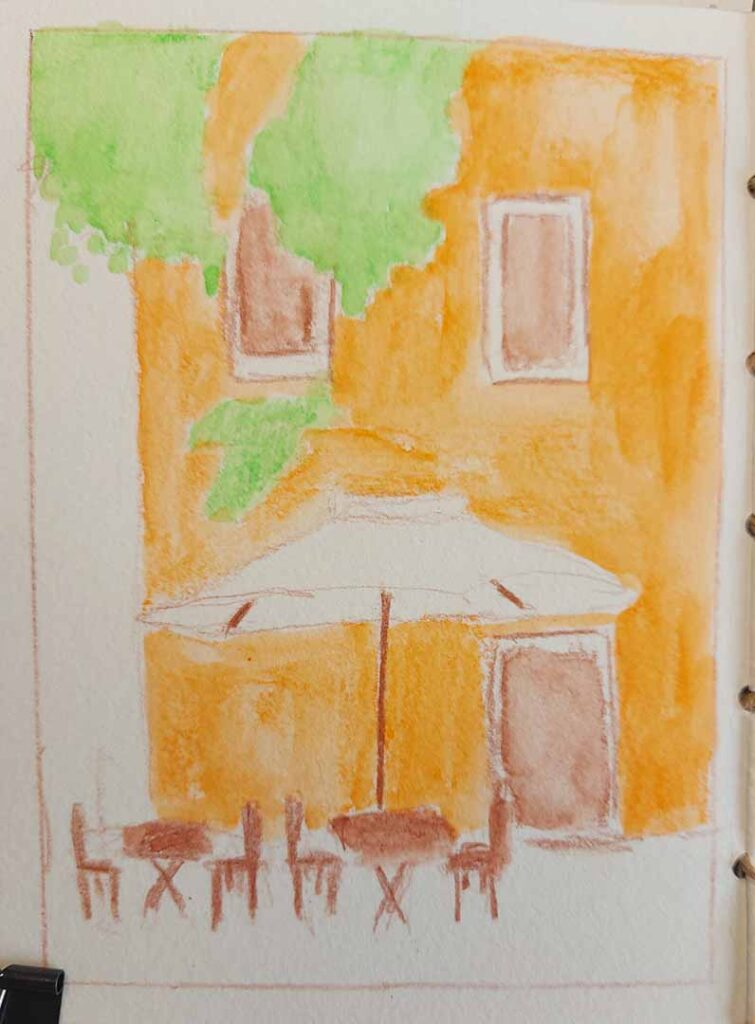
Step 3 – Shadows and Highlights
Once the base washes dried, I used the pencils again to reinforce shadows and highlights. Deeper tones around the windows, under the umbrella, and along the chairs bring depth to the scene. Adding warmer tones to sunlit areas and cooler or darker shades to shaded spots enhances the three-dimensional feeling. This step makes the sketch less flat and much closer to the real atmosphere of a sunny Roman street.

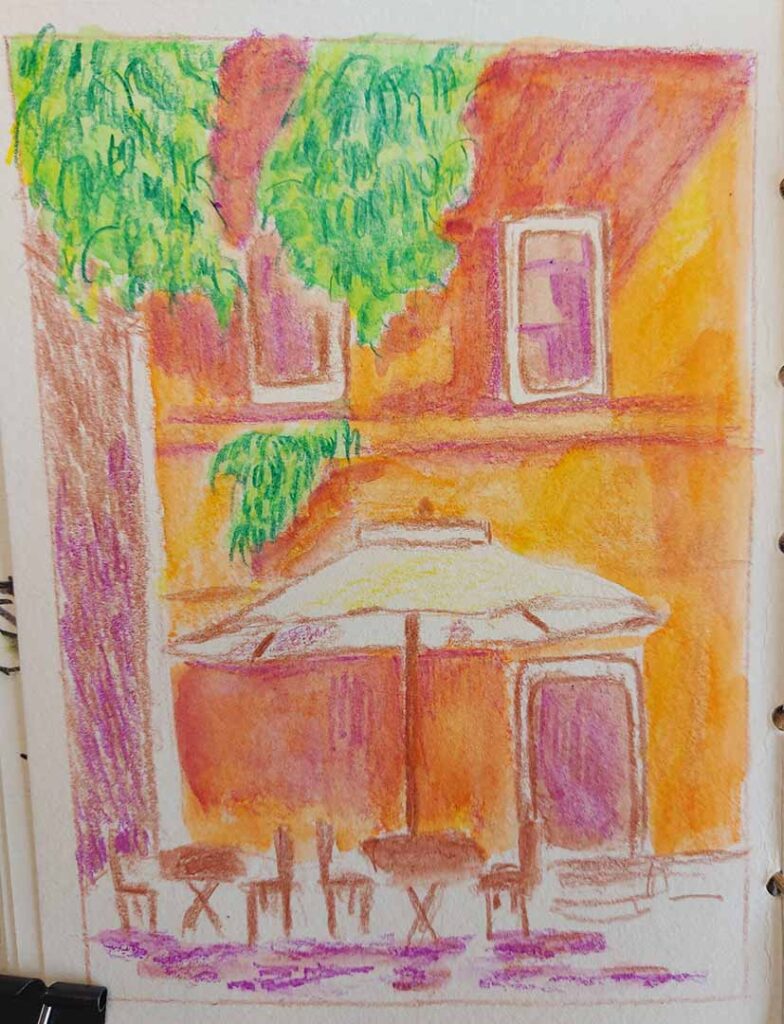
Step 4 – Details
Now it was time to work on details: the window frames, the tree branches, the texture of the wall, and the structure of the tables and chairs. Small strokes of color help to suggest the character of the building without overloading the sketch with realism. It’s also at this stage that I reintroduced stronger lines for definition, making the scene clearer and more engaging. Details bring personality and narrative to the piece.

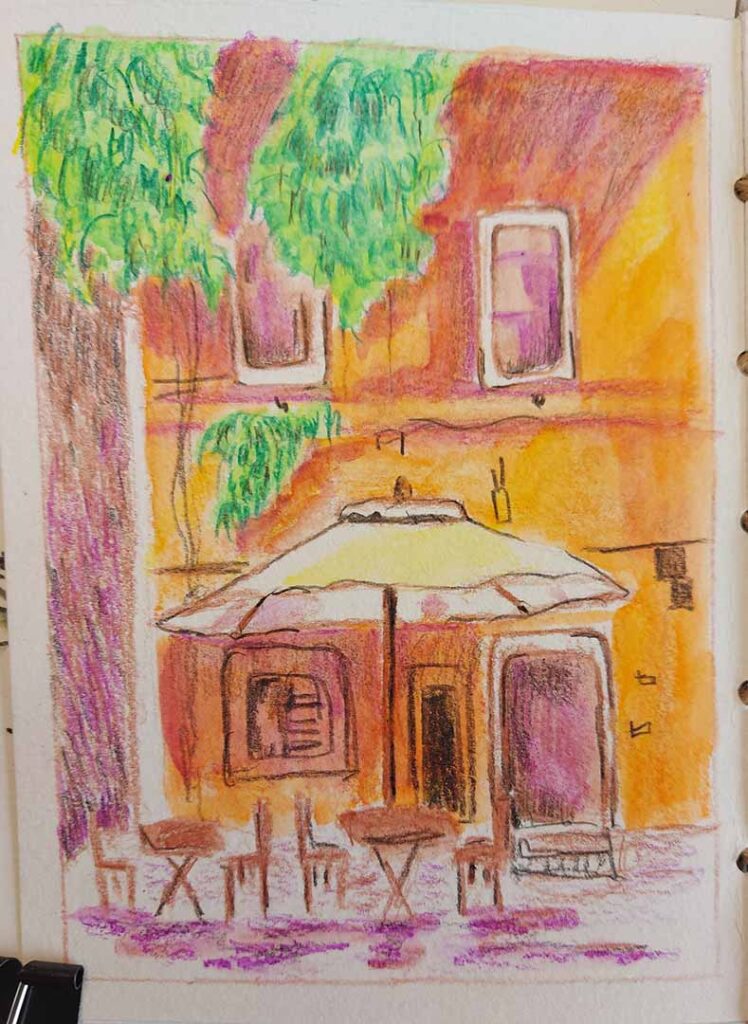
Step 5 – Final Touches
For the last stage, I used a white pen and a Posca marker to add highlights. These little touches on the umbrella, windows, and leaves create contrast and sparkle. They give the impression of sunlight reflecting on surfaces, which is essential for a lively urban sketch. This step ties everything together and makes the artwork feel complete and polished.


This process shows how watercolor pencils can transform a simple drawing into a vibrant and expressive painting. By building up from base colors to washes, shadows, details, and final highlights, you can create an artwork that captures the charm of a place. Trastevere, with its orange walls and lively cafés, provided the perfect subject for this method. Watercolor pencils are versatile, portable, and a joy to use—perfect for sketching the beauty of travel moments wherever you are.

